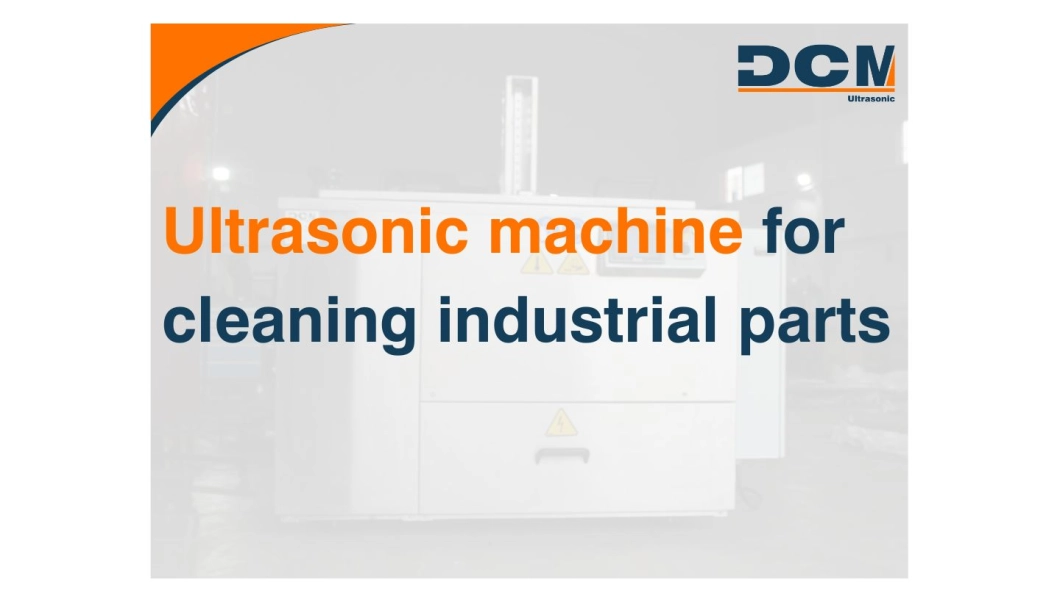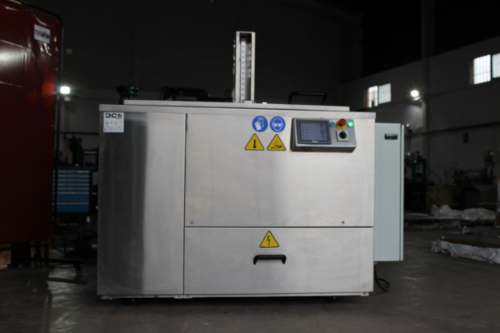Mon, 31 Mar 2025 12:43:38 +0200

An ultrasonic parts cleaning machine is a device designed to remove contaminants such as grease, oxides, dust, machining residue, and other types of dirt from metal, plastic, ceramic, and glass surfaces. It uses high-frequency ultrasonic waves to generate tiny bubbles in a cleaning liquid, which implode and dislodge the dirt without physical contact or harsh chemicals.
DISCOVER OUR ULTRASONIC MACHINES FOR CLEANING PARTS
The fundamental principle of ultrasonic cleaning is cavitation. When transducers generate ultrasonic waves in the cleaning fluid, microscopic bubbles form and collapse, releasing energy that dislodges impurities adhering to the parts. This process allows for deep and uniform cleaning, even on surfaces with cavities and complex designs.
Types of Ultrasonic Cleaning Machines
There are different types of ultrasonic cleaning equipment adapted to various industrial needs:
Ultrasonic cleaning machines are used in a wide variety of sectors:
Using ultrasonic cleaning machines offers multiple advantages:
To select the right ultrasonic cleaning machine, it is important to consider:
Ultrasonic parts cleaning machines represent a key technology in the maintenance and optimization of industrial processes. Their ability to efficiently, safely, and sustainably remove contaminants makes them an ideal choice for a variety of applications. With a constantly evolving market, ultrasonic cleaning continues to set the standard in modern industry. Investing in this technology not only improves the quality and durability of components but also reduces operating costs and environmental impact.
DCM ULTRASONIC, specialists in the manufacture of ultrasonic equipment and machines for industrial cleaning.

News
What is an Ultrasonic Parts Cleaning Machine?
31 March de 2025
Today, ultrasonic cleaning technology has become an essential method for removing dirt and contaminants from parts in various industries. From the automotive sector to the medical industry, ultrasonic parts cleaning machines offer an efficient, precise, and safe solution for keeping components in optimal condition.
What is an Ultrasonic Parts Cleaning Machine?
An ultrasonic parts cleaning machine is a device designed to remove contaminants such as grease, oxides, dust, machining residue, and other types of dirt from metal, plastic, ceramic, and glass surfaces. It uses high-frequency ultrasonic waves to generate tiny bubbles in a cleaning liquid, which implode and dislodge the dirt without physical contact or harsh chemicals.Components of an Ultrasonic Machine for Cleaning Parts
To better understand how it works, it is important to know the main components of an ultrasonic machine:- Ultrasonic Generator: Converts electrical energy into high-frequency ultrasonic waves.
- Transducers: Devices that transform electrical waves into mechanical vibrations within the cleaning fluid.
- Cleaning Tank: Container where the parts are immersed and where cavitation is generated.
- Cleaning Solution: Mixture of water and special detergents that enhance dirt removal.
- Control System: Allows regulation of cleaning frequency, temperature, and time according to the type of part and contaminant.
- Filter and Recirculation Systems: Keep the cleaning solution free of residue to improve process efficiency.
- Integrated Drying Systems: Some machines feature hot air drying to speed up the cleaning process.
DISCOVER OUR ULTRASONIC MACHINES FOR CLEANING PARTS
How Does an Ultrasonic Machine Work for Cleaning Parts?
The fundamental principle of ultrasonic cleaning is cavitation. When transducers generate ultrasonic waves in the cleaning fluid, microscopic bubbles form and collapse, releasing energy that dislodges impurities adhering to the parts. This process allows for deep and uniform cleaning, even on surfaces with cavities and complex designs.Types of Ultrasonic Cleaning Machines
There are different types of ultrasonic cleaning equipment adapted to various industrial needs:
- Tabletop Machines: Small equipment used in laboratories, dentistry, and jewelry.
- Industrial Machines: Designed for cleaning large and high-volume parts.
- Multi-Stage Equipment: Incorporates rinsing and drying phases for more comprehensive cleaning processes.
- Automated Systems: Integrated into production lines for mass cleaning.
- Dynamic Loading Systems: Ideal for high-throughput, continuous processes.
- Agitated Immersion Systems: Optimize the cleaning of parts with complex geometries or heavily adhered residue.

Applications of Ultrasonic Machines
Ultrasonic cleaning machines are used in a wide variety of sectors:
- Automotive Industry: Cleaning injectors, cylinder heads, filters, carburetors, and pistons.
- Medical and Dental Sector: Sterilization of surgical and dental instruments.
- Electronics: Residue removal from circuit boards and microcomponents.
- Aerospace: Cleaning engine components, hydraulic systems, and special alloys.
- Watch and Jewelry: Restoration of precious metals without damage.
- Food Industry: Cleaning molds, utensils, and critical components in the production process.
Benefits of Using an Ultrasonic Machine to Clean Parts
Using ultrasonic cleaning machines offers multiple advantages:
- Deep Cleaning: Removes residues even in hard-to-reach areas.
- Speed and Efficiency: Reduces cleaning time compared to traditional methods.
- Reduced Chemical Use: Reduces dependence on harsh solvents.
- Increased Part Durability: Does not cause wear or damage to components.
- Sustainable Process: Reduces environmental impact by minimizing toxic waste.
- Versatility: Suitable for a wide range of materials and contaminants.
- Lower Energy Consumption: Modern equipment optimizes the use of energy and resources.
Factors to Consider When Choosing an Ultrasonic Machine for Cleaning Industrial Parts
To select the right ultrasonic cleaning machine, it is important to consider:
- Size and Capacity: Depends on the volume of parts to be cleaned.
- Ultrasonic Frequency: Determines the type of contaminant that can be removed.
- Type of Cleaning Solution: It is essential to select detergents compatible with the parts.
- Additional Features: Such as drying, filtration, and automated programming.
Ultrasonic parts cleaning machines represent a key technology in the maintenance and optimization of industrial processes. Their ability to efficiently, safely, and sustainably remove contaminants makes them an ideal choice for a variety of applications. With a constantly evolving market, ultrasonic cleaning continues to set the standard in modern industry. Investing in this technology not only improves the quality and durability of components but also reduces operating costs and environmental impact.
DCM ULTRASONIC, specialists in the manufacture of ultrasonic equipment and machines for industrial cleaning.
